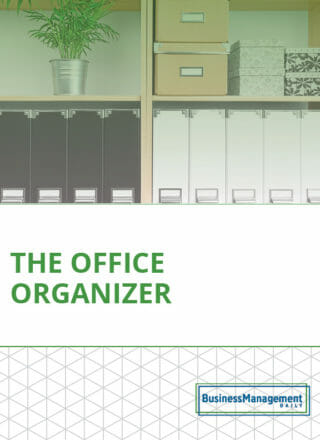What’s the opposite of working from home?
The work landscape has changed dramatically since the start of the COVID-19 pandemic last year. What once was a strict 40 hour Monday–Friday in office culture is now a flexible work culture of working from home, working in the office, or combining the two depending on the company and employee preferences.
Many employees were already “homing from work,” which incorporated completing tasks that employees must do during business hours, such as calling their insurance company, making bank deposits, and picking up dry cleaning. This practice has become even more prevalent.
Acknowledging the changes can bring fear or uneasiness as the employer because you have to consider overall employee efficiency and how fitting in life responsibilities impacts that. However, a better frame of thought might be how to make employees “homing from work” a positive move toward greater work-life balance instead of a step in the wrong direction.
Remember the advantages of flexible working
Before you focus solely on wasted work hours as employees mix work and home life together, remember the numerous benefits of offering greater flexibility during traditional work hours.
- More work-life balance. Your employees can move between work responsibilities and home responsibilities more seamlessly, which reduces stress overall. Whether that’s working at home due to an ill child or being able to take a trip to the doctor and work a bit later to complete assignments, there’s immense flexibility that can help employees achieve a greater work-life balance.
- Improved mental health. Added flexibility at work can lead to better mental health overall. COVID-19 forced employers to see their employees as humans with families, personal problems, health issues, and the like. That can’t be forgotten. When employees don’t have to stress about having time to schedule an important doctor’s appointment or needing to take a walk to clear their mind after a stressful meeting, they can perform better on the job and in life.
- Greater job satisfaction. Doing a job you enjoy with flexibility, a sense of freedom, and a lack of micromanagement leads to empowerment that increases employee enthusiasm and overall job satisfaction.
These are just a few of the benefits employees experience with a more flexible work environment. As the employer, you should certainly keep your employee experience top of mind as you consider all aspects of approaching the new work environment.

How to adapt to the new work environment
It’s unlikely that our society will return to the days of a five-day office work culture where employees spend 8 hours at their cubicle or in their office, so it’s essential to adapt to the new normal. Those companies that do, are likely to face resistance and dissatisfaction from employees.
Here are some ways to allow for flexibility while maintaining impact and efficiency surrounding work responsibilities.
Focus on work responsibilities, not time
When you consider the value your employees bring to the company, it’s likely based on the tasks they complete instead of the number of hours they’re working. So one opportunity is to focus more on their ability to complete work-related responsibilities and less on the number of hours they’re at their desk, whether in the office or at home.
In switching your mindset, it can make it easier for you to swallow the idea that an employee might stop working for an hour to take a walk around the block, handle personal errands, or something similar.
Consider if adding life to work is negatively impacting job performance
Next, ask yourself whether intermingling work and life is negatively impacting employee performance. Again, you might find that you’re more uncomfortable with the idea than the reality of how it impacts your employees’ performance.
Try to look at the situation from a neutral perspective to determine whether minor interruptions in the workday are causing a major disruption in the success of the department or the company.
Change how work shifts look
Another opportunity is to change how a typical work shift looks.
Does everyone need to be in the office Monday-Friday? Can there be one point of contact assigned in the office that rotates weekly or on different shifts? Can the team primarily work from home and meet up once per week for an in-person catch-up?
Ultimately, you want to consider what’s necessary (not just what’s comfortable) and the preferences of your employees. For example, some might prefer to work from home full time while others want to work in the office full time and still some want a mix of the two.
Technology and experiencing what it’s like to work both in-office and at home has allowed us to make changes as needed and desired.
Consider employees’ work and personal life
As mentioned previously, the pandemic highlighted that employees have personal lives behind the scenes that employers must consider. When an employee’s personal life is considered and supported by their employer, it empowers them to strive more personally and professionally. Studies have shown that employers who do support their employees’ personal lives see a more significant percentage of high-performing employees within the company.
Be flexible with work times
Another question to ask yourself is whether employees only working during typical 9-5 hours is a requirement for the company to operate at an optimal level. While it’s understandable that some jobs require employees to be available during a traditional 9-5 schedule, many others don’t. Perhaps those employees can veer from the standard 40 hour work week because it’s not a condition for job success. This is another way to focus on the quality of work employees produce instead of the hours they’re working or the time frame which they’re getting the job done.




